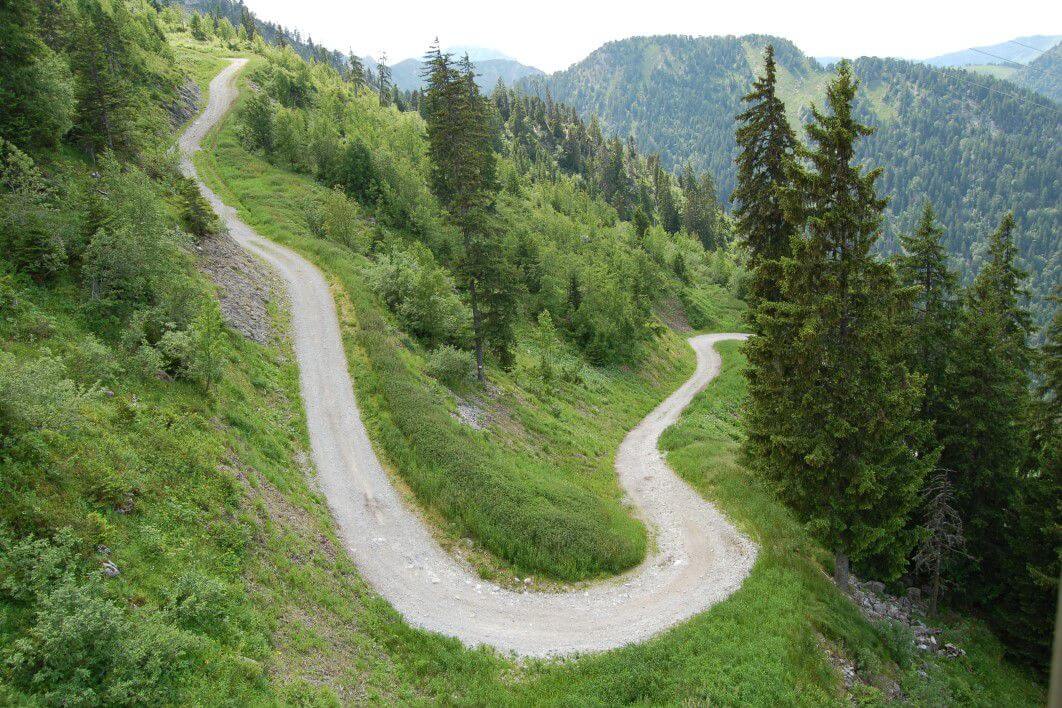Montane ecosystems are found on the slopes of mountains. The alpine climate in these regions strongly affects the ecosystem because temperatures fall as elevation increases, causing the ecosystem to stratify. This stratification is a crucial factor in shaping plant community, biodiversity, metabolic processes and ecosystem dynamics for montane ecosystems. Dense montane forests are common at moderate elevations, due to moderate temperatures and high rainfall. At higher elevations, the climate is harsher, with lower temperatures and higher winds, preventing the growth of trees and causing the plant community to transition to montane grasslands, shrublands or alpine tundra. Due to the unique climate conditions of montane ecosystems, they contain increased numbers of endemic species. Montane ecosystems also exhibit variation in ecosystem services, which include carbon storage and water supply.
Sound of mountain forest
Montane ecosystems
As elevation increases, the climate becomes cooler, due to a decrease in atmospheric pressure and the adiabatic cooling of airmasses. The change in climate by moving up 100 meters on a mountain is roughly equivalent to moving 80 kilometers (45 miles or 0.75° of latitude) towards the nearest pole. The characteristic flora and fauna in the mountains tend to strongly depend on elevation, because of the change in climate. This dependency causes life zones to form: bands of similar ecosystems at similar altitude.
One of the typical life zones on mountains is the montane forest: at moderate elevations, the rainfall and temperate climate encourages dense forests to grow. Holdridge defines the climate of montane forest as having a biotemperature of between 6 and 12 °C (43 and 54 °F), where biotemperature is the mean temperature considering temperatures below 0 °C (32 °F) to be 0 °C (32 °F).Above the elevation of the montane forest, the trees thin out in the subalpine zone, become twisted krummholz, and eventually fail to grow. Therefore, montane forests often contain trees with twisted trunks. This phenomenon is observed due to the increase in the wind strength with the elevation. The elevation where trees fail to grow is called the tree line. The biotemperature of the subalpine zone is between 3 and 6 °C (37 and 43 °F).
Above the tree line the ecosystem is called the alpine zone or alpine tundra, dominated by grasses and low-growing shrubs. The biotemperature of the alpine zone is between 1.5 and 3 °C (34.7 and 37.4 °F). Many different plant species live in the alpine environment, including perennial grasses, sedges, forbs, cushion plants, mosses, and lichens. Alpine plants must adapt to the harsh conditions of the alpine environment, which include low temperatures, dryness, ultraviolet radiation, and a short growing season. Alpine plants display adaptations such as rosette structures, waxy surfaces, and hairy leaves. Because of the common characteristics of these zones, the World Wildlife Fund groups a set of related ecoregions into the “montane grassland and shrubland” biome. A region in the Hengduan Mountains adjoining Asia’s Tibetan Plateau have been identified as the world’s oldest continuous alpine ecosystem with a community of 3000 plant species, some of them continuously co-existing for 30 million years.
Climates with biotemperatures below 1.5 °C (35 °F) tend to consist purely of rock and ice








